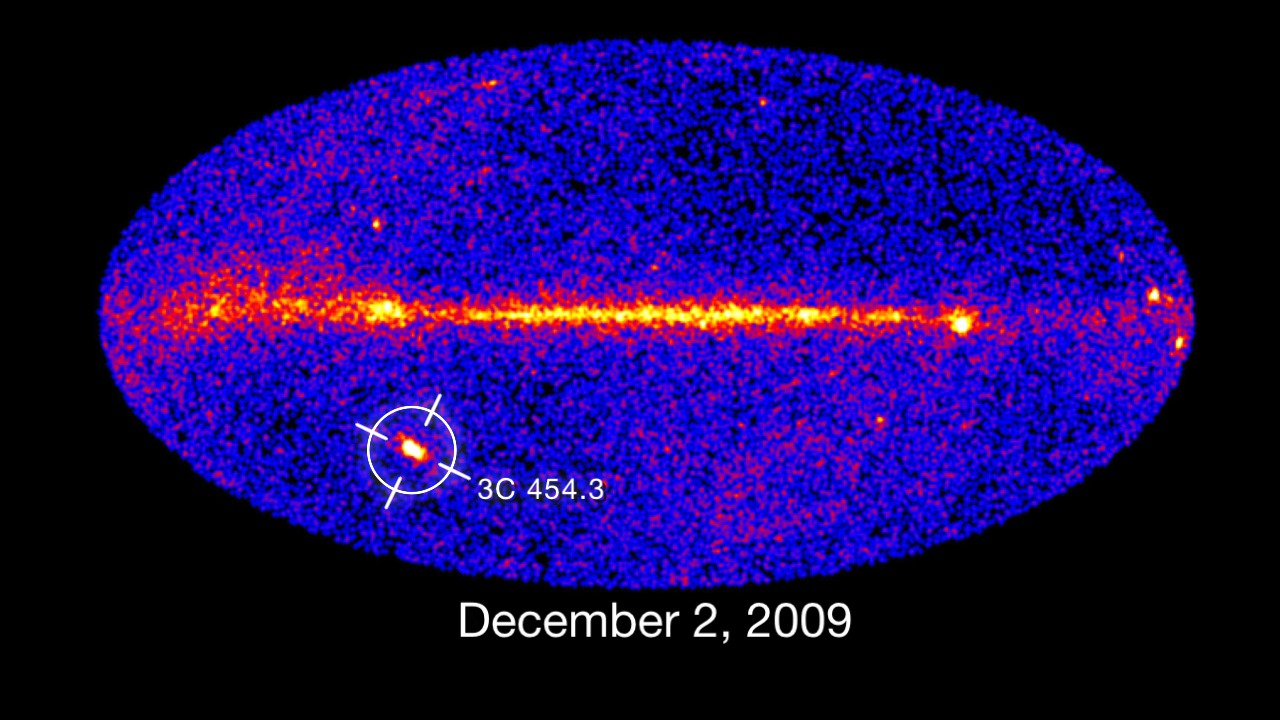Brightest-ever Flare From Blazar 3C 454.3
The blazar 3C 454.3, which lies 7.2 billion light-years away in the constellation Pegasus, underwent a series of intense flares in the fall of 2009. By December, it had become the brightest persistent gamma-ray source in the sky — more than ten times brighter than it was in the summer. These all-sky images, which record the numbers of high-energy gamma-rays captured by Fermi's Large Area Telescope on Dec. 3 and Nov. 18, clearly show the change. Typically, the Vela pulsar, which lies only 1,000 light-years away, is the sky's brightest persistent source of gamma rays. Blazar 3C 454.3, which is millions of times farther away, rose to twice Vela's brightness. Astronomers suspect the activity is driven by some change within the galaxy's black-hole-powered particle jet, but they do not understand the details.
Dissolve showing change in brightness of Blazar 3C 454.3

Fermi All-Sky Comparison-No Labels

Fermi All-Sky Comparison-With Labels
For More Information
Credits
Please give credit for this item to:
NASA/DOE/Fermi LAT Collaboration
Goddard Space Flight Center
-
Animators
- Stefano Ciprini (INFN)
- Benoit Lott (CENBG)
-
Video editor
- Scott Wiessinger (UMBC)
-
Producer
- Scott Wiessinger (UMBC)
-
Scientist
- Julie McEnery (NASA/GSFC)
-
Science writer
- Francis Reddy (University of Maryland College Park)
-
Graphics
- Francis Reddy (University of Maryland College Park)
Missions
This page is related to the following missions:Series
This page can be found in the following series:Datasets used
-
[Fermi: LAT]
ID: 216Fermi Gamma-ray Large Area Space Telescope (GLAST) Large Area Telescope (LAT)
This dataset can be found at: http://fermi.gsfc.nasa.gov
See all pages that use this dataset -
[Fermi]
ID: 687
Note: While we identify the data sets used on this page, we do not store any further details, nor the data sets themselves on our site.
Release date
This page was originally published on Wednesday, December 9, 2009.
This page was last updated on Wednesday, May 3, 2023 at 1:54 PM EDT.
